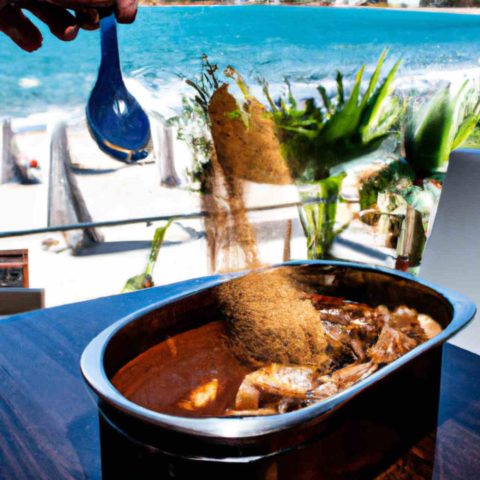If you’ve ever made a curry recipe that tasted bland, watery, and just plain bad, don’t worry—you’re not alone.
A perfect curry is notoriously difficult to get right, which is why we’re here to help.
In this blog post, we’ll share our top tips for making a tasty curry that’s packed with flavor.
So, whether you’re new to making curry or you’re just looking for ways to step up your game, read on!
What Makes a Curry Taste Good?
When it comes to curries, there are endless possibilities in terms of ingredients and distinctive curry flavor profiles.
However, there are a few key elements that all good curries have in common.
Firstly, a good curry should have a balance of spice and chili heat (red pepper). Too much of either can be overwhelming, but the right mix of spices can create a truly addicting flavor.
You can also add additional flavor to reheating a curry following these methods.
Another important element is to cook your ingredients to medium heat. Finally, good curries always start with a layer of base flavor, whether it be rich coconut milk or fragrant chicken stock.
By following these simple tips, you can create tasty and flavorful curry dishes that are sure to impress.
How Do You Fix a Tasteless Curry?
If your curry lacks flavor, there are a few easy ways to fix it.

Make the Curry Base Well
One way to prevent bland curry is by ensuring that your curry sauce is well-seasoned.
This means adding black pepper, pureed onion, and other spices to the base of your curry before you start cooking. This will help ensure that your spices’ flavors are evenly distributed throughout the dish.
Add Fresh Herbs
Another way to add flavor to curry is by adding fresh herbs. This can be done either at the beginning of the cooking process or at the end.
Adding fresh herbs at the beginning of the process will allow their flavors to infuse into the dish while adding them at the end will give the dish a bright, fresh flavor.
Add Spices at the Right Time
One common mistake people make when making curry is adding all of the spices at once. This doesn’t give the spices a chance to bloom and develop their flavors, and as a result, the curry can taste flat and one-dimensional.
Instead, try adding the spices in stages.
First, add the whole spices (such as cumin seeds or cardamom pods) and allow them to toast in the oil for a minute or two.
Then, add the ground spices (such as turmeric or garam masala) and cook for another minute or two. (Lamb Curry Recipe)
Finally, add any fresh herbs (such as ginger paste or garlic) and cook until fragrant.
By adding the spices at different stages, you’ll end up with a much more complex and flavourful curry.
Don’t Add Too Much Water
Another common mistake people make when making curry is adding too much water. This dilutes the flavors of the dish and makes it taste watered-down.
So how much water should you add? It depends on what type of curry you’re making.
For example, if you’re making a dry curry like aloo gobi, you won’t need to add any water at all—the vegetables will release enough liquid as they cook.
But if you’re making curry watery like chana masala, you may need to add a cup or two of water so that the vegetables don’t stick to the pan and burn.
Just be careful not to add too much—you can always add more water later if needed, but you can’t take it out once it’s in!
Add Condiments
Condiments such as fish sauce and tamarind paste are often used in Thai curries because they help brighten up the dish and add another layer of flavor.
Fish sauce is another great way to add umami flavor to a dish—just be careful not to add too much, as it can be quite salty!
Lastly, tamarind paste is commonly used in Indonesian curries because it adds a lovely sweetness and depth of flavor. If you can’t find tamarind paste at your local grocery store, you can also use mango chutney instead.
Add Acidity
You can also add acidity to the curry in order to balance out the richness of the dish.
This can be done by adding a squeeze of lemon juice or vinegar at the end of cooking. If you want your curry tangy and to have some zing, try adding a tablespoon or two of lemon juice towards the end of cooking.
Adding acidity will also help to brighten up the flavors of the dish.
Add Sweetness
Finally, you can also add sweetness to curry in order to balance out the heat. This can be done by adding sugar, honey, or fruit juices at the end of cooking.
Adding sweetness will add depth to curries and make them more enjoyable to eat.
Conclusion
Making a delicious curry sauce recipe isn’t easy—but it is possible!
By following our tips for flavoring your curry base, adding spices at the right time, avoiding too much water, and adding condiments, fresh herbs, and some acidity and sweetness, you’ll be well on your way to making a bowl of curry that’s packed with flavor!